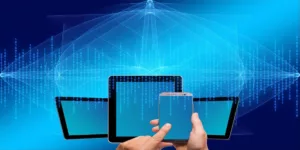“Is there any direct solution to transfer from iPhone to Samsung all my data at once? I have recently got a Samsung Galaxy S10 but all my data is still on my last iPhone!”
While moving from one smartphone to another is always a tedious job, it can even be more complicated when we perform a cross-platform transfer. For instance, if you are moving from Samsung to iPhone or vice versa, then you might get limited options. Too many times, while moving from iOS to Android, users end up losing their important files. If you don’t want to suffer from the same fate, then read this well-researched guide. We have come up with different solutions to help you switch your smartphone with no data loss.
dr.fone – Switch: Performs a one-click direct device-to-device transfer
This is undoubtedly the easiest way to move from one smartphone to another. The application allows us to move all the important data from a source to another target device. Since it is compatible with every leading iOS and Android device, you can even perform a cross-platform transfer. This means, users can transfer from iPhone to Samsung (or vice versa) their crucial data with a single click.
- It can perform a direct phone to phone transfer. This includes data transfer between iOS and Android, Android and Android, or iOS and iOS.
- With just one click, users can move all kinds of data like photos, videos, music, contacts, call logs, messages, and so much more.
- The application features an extremely user-friendly an intuitive interface. The quality of data is also not compromised in the process.
- Extensive compatibility with all the new iOS and Android devices
To learn how to transfer data from Samsung to iPhone or vice versa with dr.fone, you can follow these basic steps:
Step 1: Connect both the phones
Firstly, launch the dr.fone application on your system and connect the Samsung and iOS device to it. From its home, you need to select the “Switch” feature.
Step 2: Select the type of content to transfer
Both the devices will be detected by the application and would be marked as either source or destination. There’s a flip button that can be used to change their places. Now, you need to select the data that you wish to move (like photos, contacts, videos, and so on).
Step 3: Start the transfer process
After checking the respective data types, just click on the “Start Transfer” button. Wait for a while as the application would move your data and don’t disconnect the devices in between.
Once the process is completed, you will be notified. That’s it! You can now safely remove both the device and check if you can access the transferred data on the target phone.
dr.fone – Backup & Restore: To restore iCloud data on Samsung
If you have already taken a backup of your iPhone data on iCloud, then you can use dr.fone – Backup & Restore (Android). It is also a part of the dr.fone toolkit that provides easy backup and restore solutions for Android. Apart from taking a backup of your device, it can also restore the data from an existing iCloud or iTunes backup too. You can preview your iCloud backup content and selectively transfer it to your Samsung. Before you proceed, just make sure you have already maintained a backup of your iPhone on iCloud.
Step 1: Connect your phone
Start by launching the application and visiting the “Backup & Restore” option from its home. Also, connect your Samsung device to the system. Once it is detected, you will get the following screen. Click on “Restore” to continue.
Step 2: Log-in to your iCloud account
From the left panel, visit the “Restore from iCloud backup” option. Simply log-in to your iCloud account by entering the right credentials.
After successfully signing-in, the application will display a list of all the existing backup files. You can view their details and download the backup file of your choice.
Step 3: Preview and restore your data
Wait for a while as the application would extract the backup and display its content. You can preview all the retrieved data and select the content you wish to restore. Click on the “Restore to Device” button to directly move the selected data to your Samsung.
Other methods to transfer data between Samsung and iPhone
Apart from the above-listed solutions, you can also try some other options. Though, they come with certain restrictions.
- Samsung Smart Switch
Smart Switch is a dedicated app developed by Samsung. It allows us to move our data from an existing iPhone or Android to a Samsung Galaxy phone. You can connect both the devices wirelessly or by using a USB to lightning cable adapter. Once both the devices are connected, you can simply move your content.
Cons
- Limited data support
- Difficult to use
- Not compatible with major devices
- Can only be used for Samsung phones
- Move to iOS
If you are moving from a Samsung to iPhone instead, then you can also try Move to iOS. It is a dedicated Android app that is developed by Apple. While setting up a new iPhone, choose to restore content from an Android. Afterward, connect both the devices and transfer your data.
Cons
- A bit complicated approach
- Limited compatibility
- Does not support all the major data types
- No preview of data is available
- Google Account
Lastly, you can also take the assistance of your Google account to sync contacts, emails, calendar, etc. Firstly, go to your iPhone account settings and add your Google account. Now, enable the syncing option. Later, you can use the same Google account on your Android to access the synced content.
Cons
- Can only sync limited data (like contacts and calendar)
- Time-consuming
Now when you know 5 different ways to move data between iPhone and Samsung, you can easily manage your important files. To have a hassle-free experience, you can simply try dr.fone. For instance, dr.fone – Switch provides a one-click solution to transfer from iPhone to Samsung all your data at once. In order to retrieve data from an iCloud backup on Samsung, you can further try dr.fone – Backup & Restore (Android).








